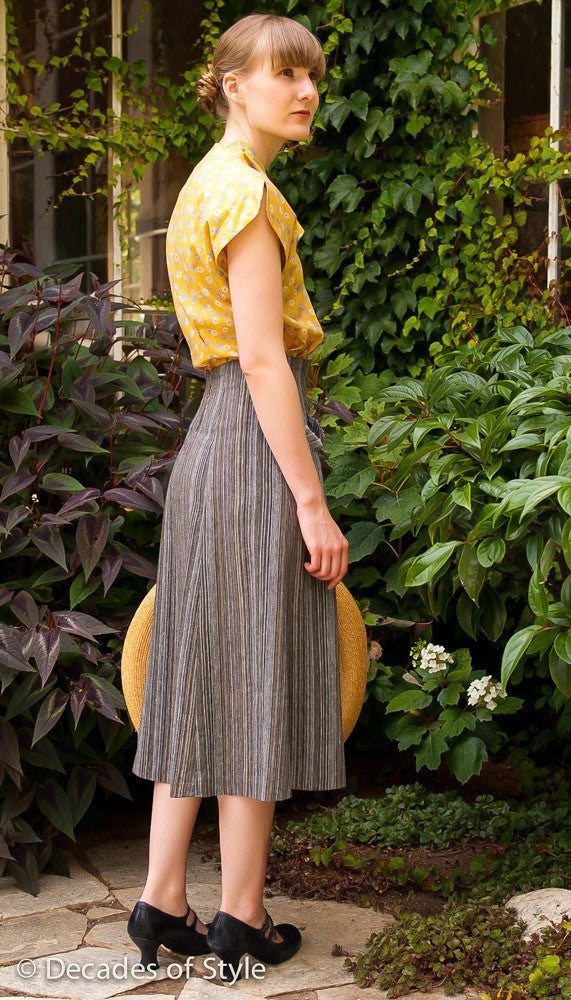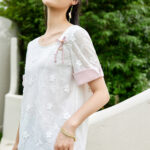Vintage Glamour: How to Style a 1950s Skirt for Modern Chic
Embracing the elegance of a 1950s skirt isn’t about reliving the past; it’s about infusing timeless charm into contemporary wardrobes. This piece explores how to adapt these iconic garments for today’s fashion landscape, blending historical authenticity with modern flair. Let’s dive into the art of styling with practical tips and professional insights.
The Timeless Appeal of the 1950s Skirt
The 1950s skirt emerged as a symbol of post-war optimism, characterized by full silhouettes, nipped waists, and playful prints. According to the Fashion Institute of Technology’s archives, this era celebrated femininity through designs that emphasized curves, a stark contrast to the utilitarian styles of the 1940s. Figures like Christian Dior, with his “New Look” collection, revolutionized fashion by reintroducing luxury and volume, making circle skirts and pencil skirts wardrobe staples. In modern contexts, these skirts offer versatility; their structured forms can be paired with minimalist tops for balance, as noted by style experts on platforms like Who What Wear. The key lies in understanding the skirt’s architectural elements—such as the A-line cut or tulip hem—which create flattering proportions for diverse body types. By integrating these designs into daily wear, we honor their heritage while crafting looks that feel fresh and intentional.

Essential Styling Techniques for Modern Wear
To master the modern chic aesthetic, start by selecting a 1950s skirt that complements your lifestyle. For instance, a full-circle skirt in a bold floral print, as seen in films like “Funny Face,” can be toned down with a simple fitted turtleneck and ankle boots, blending vintage drama with urban edge. As YouTube fashion educator Alexa Chung advises, “The magic is in the mix—pairing something nostalgic with contemporary pieces avoids costume-like appearances.” Consider fabric choices; cotton or taffeta skirts from brands like Vivien of Holloway offer durability and ease, while incorporating stretch materials updates comfort. When accessorizing, opt for minimalist jewelry to let the skirt’s details shine, and layer with a cropped denim jacket for casual outings. This approach not only enhances versatility but also aligns with sustainable fashion principles by investing in quality pieces that transcend trends.

Integrating Professional and Casual Elements
Transitioning a 1950s skirt from day to night requires strategic layering. For professional settings, pair a high-waisted pencil skirt with a crisp button-down blouse and blazer, echoing the tailored elegance championed by designers like Coco Chanel. Quora discussions highlight that this combination projects confidence while maintaining a touch of retro sophistication. In casual scenarios, as demonstrated in lifestyle blogs such as The Everygirl, team a swing skirt with a graphic tee and sneakers for an effortless vibe. The skirt’s inherent structure adds polish to relaxed outfits, making it ideal for brunches or weekend errands. Moreover, incorporating modern textures like vegan leather or sustainable fabrics can elevate the look, offering discounts through seasonal sales on platforms like Etsy or Decades of Style. By experimenting with proportions and colors, you create a personalized style narrative that bridges decades.

Celebrity Insights and Cultural References
Celebrities have long embraced the 1950s skirt as a red-carpet staple. Taylor Swift, for example, often incorporates retro silhouettes into her performances, citing influences from classic Hollywood in interviews. On Twitter, fashion critic Vanessa Friedman remarked, “Vintage pieces like these skirts anchor an outfit in history while allowing for creative expression.” Similarly, films such as “La La Land” showcase how these skirts evoke nostalgia without sacrificing modernity. From an academic perspective, the University of Fashion’s online courses explain that the skirt’s design principles—like bias cutting for fluid movement—remain relevant in contemporary collections. By drawing from these diverse sources, we see how the 1950s skirt transcends mere trendiness, becoming a canvas for individual storytelling and cultural dialogue.

Ultimately, styling a 1950s skirt for modern chic is an exercise in balance—honoring its rich history while embracing today’s dynamism. Through thoughtful pairings and informed choices, these garments become enduring staples that celebrate both past and present.






